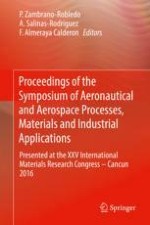This book presents selected contributions to the Symposium of Aeronautical and Aerospace Processes, Materials and Industrial Applications of the XXV International Materials Research Congress (IMRC).
Each chapter addresses scientific principles behind processing and production of materials for aerospace/aeronautical applications. The chapter deals with microstructural characterization including composites materials and metals. The second chapter deals with corrosion in aerospace components is a large and expensive problema for aerospace industry. Finally, the last chapter covers modeling and simulation of different processes to evaluate and optimize the forming process. This book is meant to be useful to academics and professionals.
